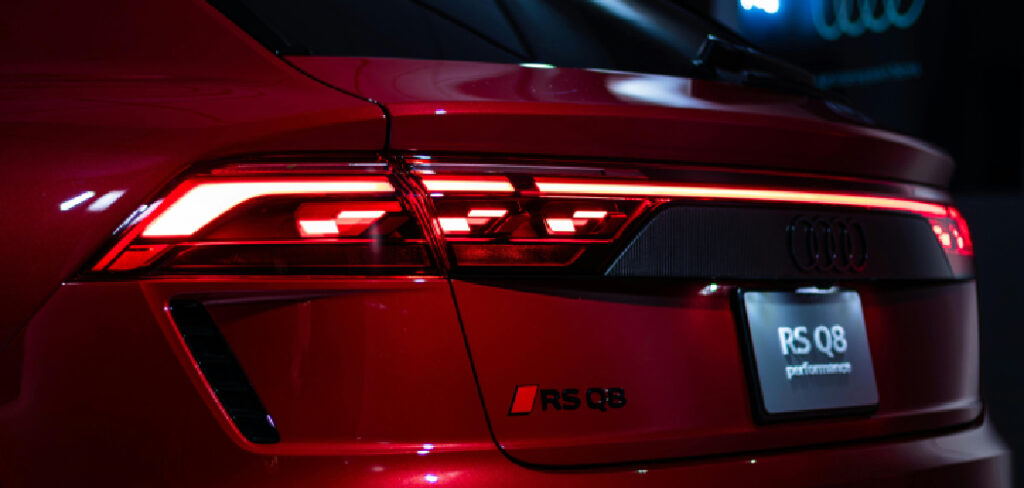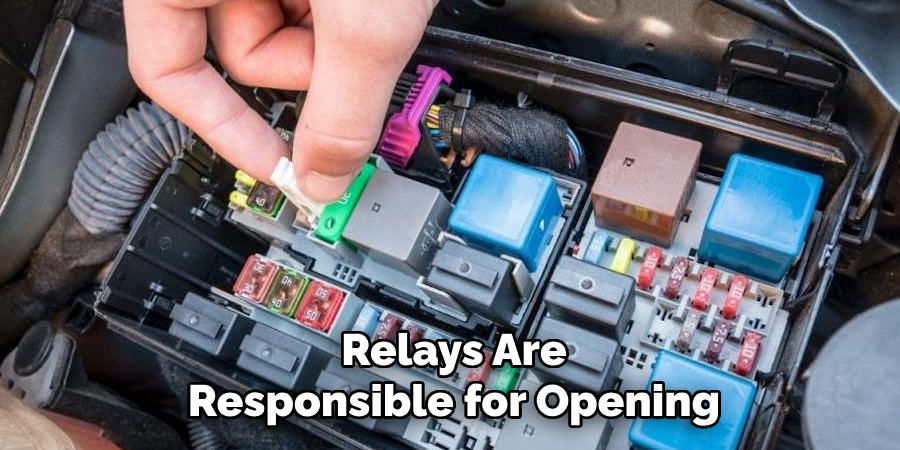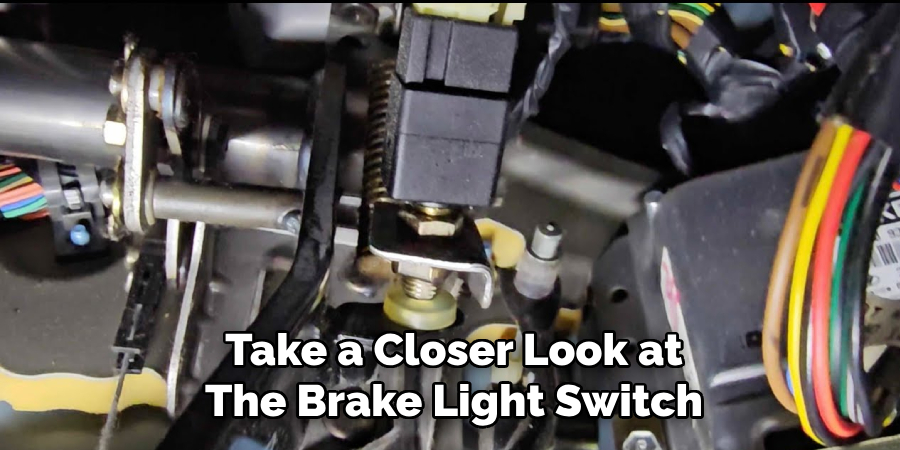Tail lights are essential for vehicle safety, ensuring visibility in low light or bad weather. However, they can sometimes stay on unnecessarily, leading to battery drain or electrical issues—especially when the car is off or undergoing maintenance.

Common causes include faulty wiring, a stuck brake switch, or aftermarket lighting modifications. In some cases, repairs or custom setups require turning them off manually. Understanding how tail lights work and knowing how to safely shut them off can prevent problems and save on repairs.
This article explores why tail lights stay on, how to turn off tail lights step by step, and offers helpful maintenance tips and answers to frequently asked questions.
Understanding Tail Lights
What Are Tail Lights?
Tail lights are red rear-facing lights that automatically turn on with your headlights or parking lights, ensuring your vehicle is visible in low-light conditions. Unlike brake lights, which activate when braking, or turn signals and reverse lights, tail lights remain steadily lit. They play a crucial role in road safety by alerting drivers behind you of your presence, especially at night or in poor visibility.
Why You Might Need to Turn Them Off
There are several practical reasons you may want—or need—to turn off your vehicle’s tail lights manually or troubleshoot them when they won’t shut off automatically:
- Battery Preservation: When your car is parked and tail lights are stuck on, they can drain your battery within hours.
- Faulty Wiring or Relay Issues: Internal electrical faults might cause the lights to stay on regardless of your headlight switch setting.
- Maintenance or Repair: If you’re replacing the tail light assembly or inspecting bulbs, turning off the tail lights is a basic first step.
- Lighting Modifications: Custom setups like LED conversions or trailer wiring kits may require manual shutdown to prevent interference.

Common Reasons Tail Lights Stay On
Understanding the root cause of tail lights that won’t shut off can help you apply the correct fix faster. Here are some of the most common reasons this issue occurs:
Faulty Brake Light Switch
A faulty brake light switch near the pedal can stay stuck, keeping the circuit closed and the lights on. This often happens in older vehicles or after hard braking that damages the internal spring, preventing the lights from turning off even when the pedal is released.
Bad Tail Light Relay
Relays are responsible for opening and closing circuits in your vehicle. If the tail light relay becomes stuck or fails, it can send continuous power to the lights even when the ignition is off. Replacing the relay is typically an affordable fix.
Headlight Switch Malfunction
In many vehicles, the headlight switch controls both the front and rear lights. A worn or damaged headlight switch might keep the tail lights powered even when set to “off.” This is particularly true if the switch mechanism has become loose or sticky over time.
Incorrect Aftermarket Wiring
Modifications like trailer light connectors, LED kits, or universal wiring harnesses can disrupt your vehicle’s original electrical system. If installed improperly, they may send unintended power to the tail lights, causing them to stay on.
Necessary Tools and Materials
Having the right tools can make the diagnosis and repair process much smoother. Here’s a list of essential items you’ll need for safely troubleshooting and fixing your tail lights:

- Wrench or socket set
- Screwdrivers (Phillips and flathead)
- Multimeter or test light
- Electrical contact cleaner
- Replacement fuse or relay
- OBD-II scanner
- Your vehicle’s owner’s manual
5 Easy Steps on How to Turn Off Tail Lights
With proper tools and safety precautions, turning off tail lights is manageable even for a beginner. This step-by-step guide helps diagnose and resolve the issue efficiently.
Step 1: Turn Off Power and Test Basic Functions
Start by switching off your vehicle’s headlights and ignition to eliminate any active power that could interfere with your troubleshooting. Next, press and release the brake pedal a few times. This action checks if the brake light switch is stuck in the “on” position.
If the tail lights turn off after doing this, the issue was likely minor—perhaps a jammed or momentarily unresponsive brake switch. However, if the lights remain on, it signals a deeper issue that requires further inspection.
Step 2: Disconnect the Battery to Reset the System
If pressing the brake pedal doesn’t solve the problem, it’s time to reset the system by disconnecting the battery. Pop the hood and locate the negative battery terminal (usually marked with a “-” sign). Use a wrench to loosen and disconnect the terminal. Wait for about 3 to 5 minutes to allow any residual electrical charge in the system to dissipate.
Reconnect the terminal and check if the tail lights have turned off. If they do, it suggests the issue was related to a glitch or an electrical component that reset itself. If the lights stay on, continue diagnosing.
Step 3: Inspect Brake Switch, Relay, and Fuse
Next, take a closer look at the brake light switch, which is usually located just above the brake pedal. This switch is responsible for activating your brake lights when you press the pedal. If it appears broken, loose, or stuck, it may need replacement.

Then, consult your owner’s manual to locate the vehicle’s fuse box. Inside, find the fuse and relay responsible for the tail lights. Remove the tail light fuse and inspect it. If the metal strip inside is broken or the fuse appears burnt, replace it with one of the same amperage. Similarly, check the tail light relay.
If you suspect it’s faulty, you can often swap it with another identical relay from the box to test. A failed relay can keep the circuit open and the lights stuck in the “on” position.
Step 4: Check the Headlight Control Switch
Sometimes the issue lies within the headlight or light control switch on your dashboard. Turn the switch knob several times to loosen any internal debris or contact corrosion. If the switch feels loose, sticky, or unresponsive, it may be damaged and require replacement.
A faulty switch may not register that the lights should be off, causing them to remain illuminated even when turned off from the control.
Step 5: Remove Bulbs Temporarily or Consult a Professional
If you’ve tried all the above steps and the tail lights are still on, you may need to temporarily remove the bulbs. Open the trunk or tailgate and access the rear of the tail light housing. Carefully unscrew the bulbs and store them in a safe place. This is not a permanent fix, but it can prevent battery drain while you continue diagnosing the problem.
If the issue still isn’t resolved, it could stem from deeper electrical problems, such as a short circuit, bad wiring, or a malfunctioning control module. In such cases, it’s best to take the vehicle to a certified mechanic or auto electrician for professional diagnostics and repair.
Additional Tips
Use an OBD-II Scanner
For newer vehicles, using a scanner to check fault codes can quickly reveal electrical or communication errors linked to the lighting system. It’s a helpful tool if the issue is ECU- or module-related.
Avoid Using Cheap Aftermarket Wiring Kits
Low-quality kits can cause unintended electrical connections and grounding issues. Always opt for products with good reviews and proper shielding.
Keep Your Manual Handy
Your owner’s manual contains essential diagrams and information on your specific vehicle model—especially when locating relays and fuses.

Encourage Preventive Care
Conducting regular inspections and using high-quality replacement parts helps you avoid tail light issues altogether. Check your brake pedal feel, tail light function, and fuse box periodically, especially before long drives.
Frequently Asked Questions
Q: How do I know if my brake light switch is bad?
Ans: If the brake lights remain on even after you release the pedal or flicker while driving, it likely means the switch is stuck or malfunctioning.
Q: Can a bad relay cause tail lights to stay on?
Ans: Yes. A failed or sticky relay may keep sending power to the lights continuously. Replacing the relay often resolves this problem.
Q: Is it safe to drive with tail lights that won’t turn off?
Ans: No, because you risk draining your battery and creating confusion for other drivers. It’s also a potential electrical hazard if not addressed promptly.
Q: Do all cars have a separate fuse for tail lights?
Ans: Most modern vehicles do, but it varies by manufacturer. In some models, tail lights share a fuse with dashboard lights or parking lights.
Q: How much does it cost to fix tail lights that won’t turn off?
Ans: It depends on the issue. Basic fixes like a new switch or fuse cost $10–$50, while electrical diagnostics or module replacement may range from $100–$300 or more.
Conclusion
Tail lights are essential for visibility and road safety, but they can become frustrating when they won’t turn off. Common causes include a stuck brake light switch, faulty relay, or improper aftermarket wiring. This article has outlined how to identify and fix these issues step by step using basic tools and knowledge. In most cases, the problem can be resolved without professional help.
However, if the lights remain on after troubleshooting, it’s best to consult a mechanic to avoid battery drain or further damage. Preventive maintenance, quality components, and careful installations go a long way in keeping your tail lights functioning properly. With the right approach, you can stay safe and avoid future electrical headaches.
